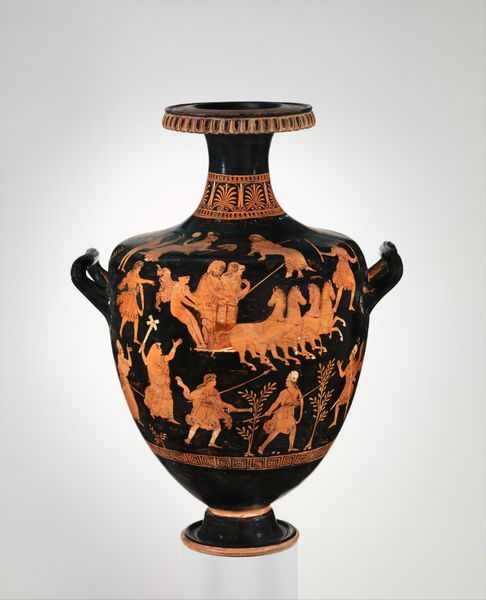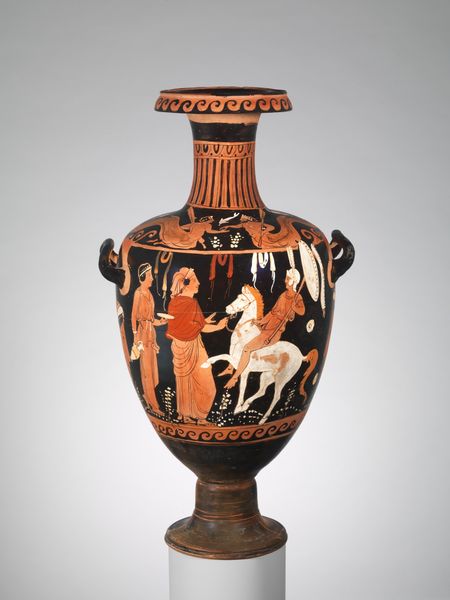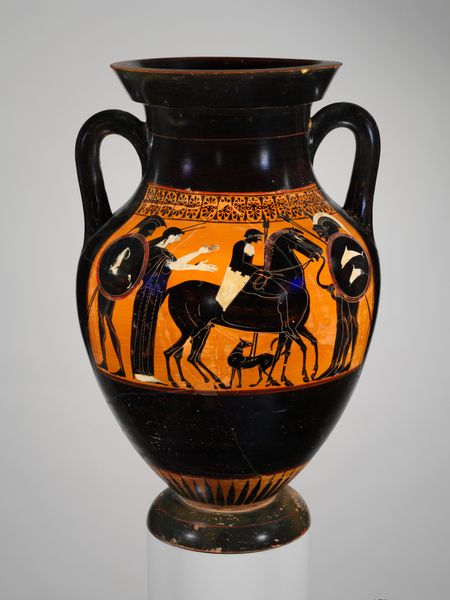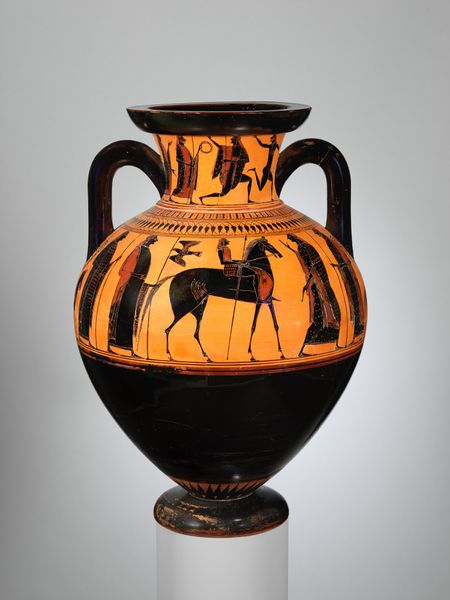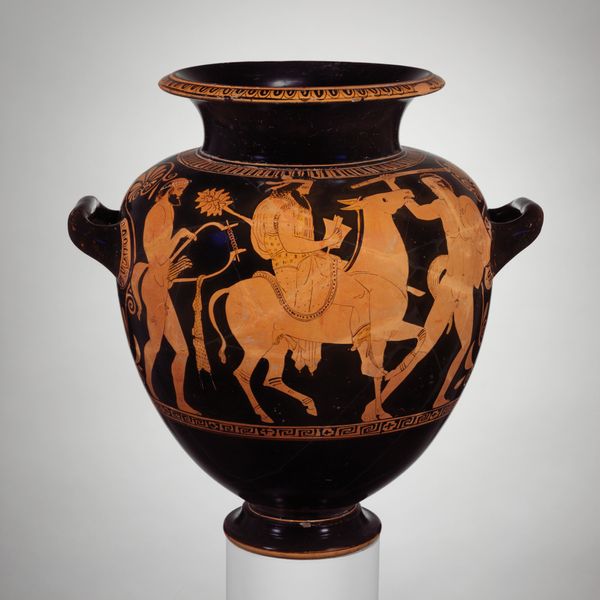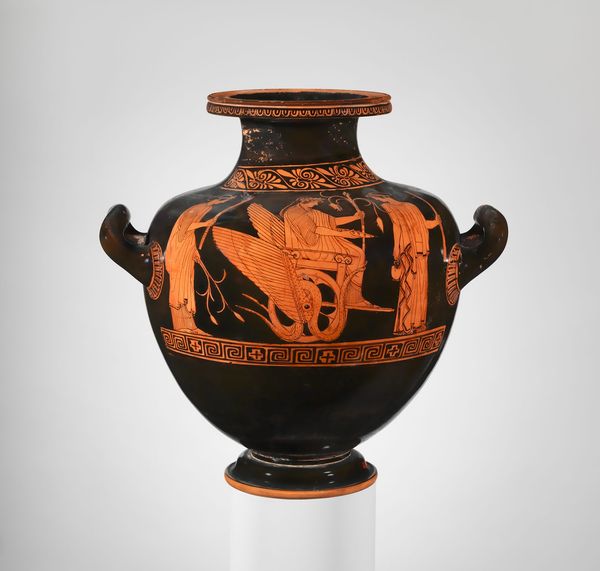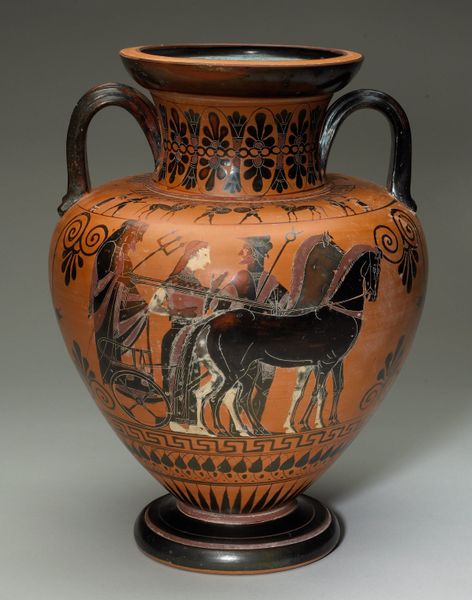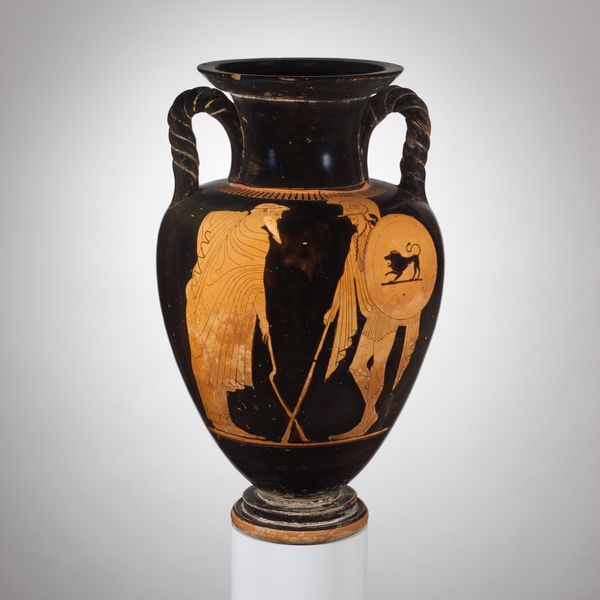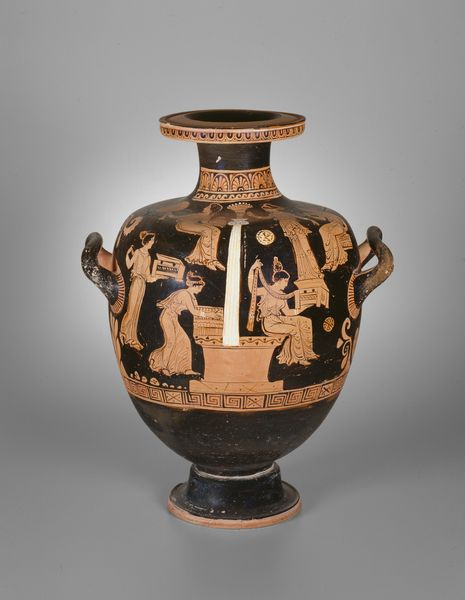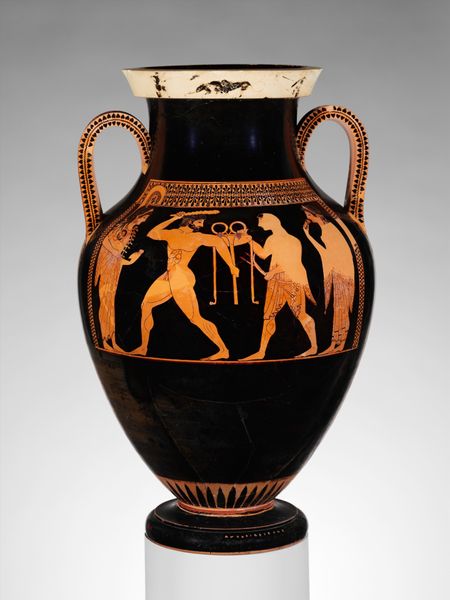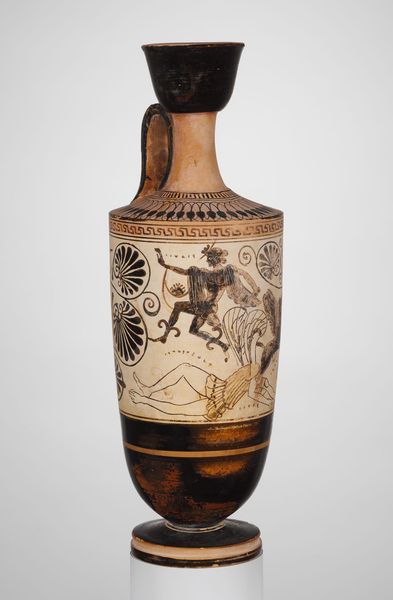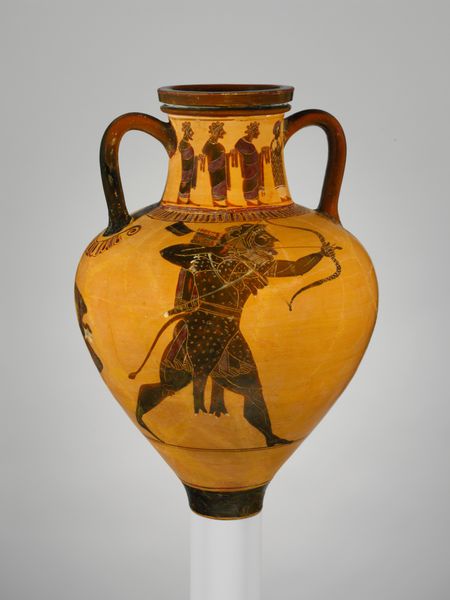
ceramic
#
narrative-art
#
pottery
#
greek-and-roman-art
#
ceramic
#
figuration
#
ancient-mediterranean
#
ceramic
Copyright: Public domain
Curator: It is an honor to be here with you. Editor: Here we have a terracotta hydria, or water jar, dating back to 350 BC, created by an ancient Greek artist. It resides at the Metropolitan Museum of Art. I’m really drawn to how the figures stand out against the black background. What's your perspective on it? Curator: What strikes me is the specific type of clay, its provenance, and how the potter and painter collaborated, likely as part of a larger workshop economy. How did their social status influence the production? Editor: That’s a fascinating way to think about it, the socioeconomic implications. I was more focused on the artistic skill involved. Curator: Skill is crucial, but where does skill originate? The knowledge, the repetitive labor, the economic conditions that enable that level of production. We also have to think about who used this jar, the social context in which it operated and in turn how these stories relate back to it’s construction. Editor: So, it’s less about the aesthetic achievement and more about the process of making and how this process itself tells a story about labor and its status in ancient Greece? Curator: Precisely! The decoration itself, rendered in the red-figure style, uses a refined clay slip to achieve detail, but it is ultimately a product of the culture, it tells a material story. What implications did the social conditions of manufacture, access to material, and method have on the value of this vase? Editor: It never occurred to me to consider how the production impacted my viewing experience, but I see your point. Curator: I'm glad to have offered another layer of perspective. I am always learning. Editor: Likewise. Thanks!
Comments
No comments
Be the first to comment and join the conversation on the ultimate creative platform.
